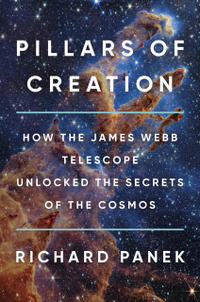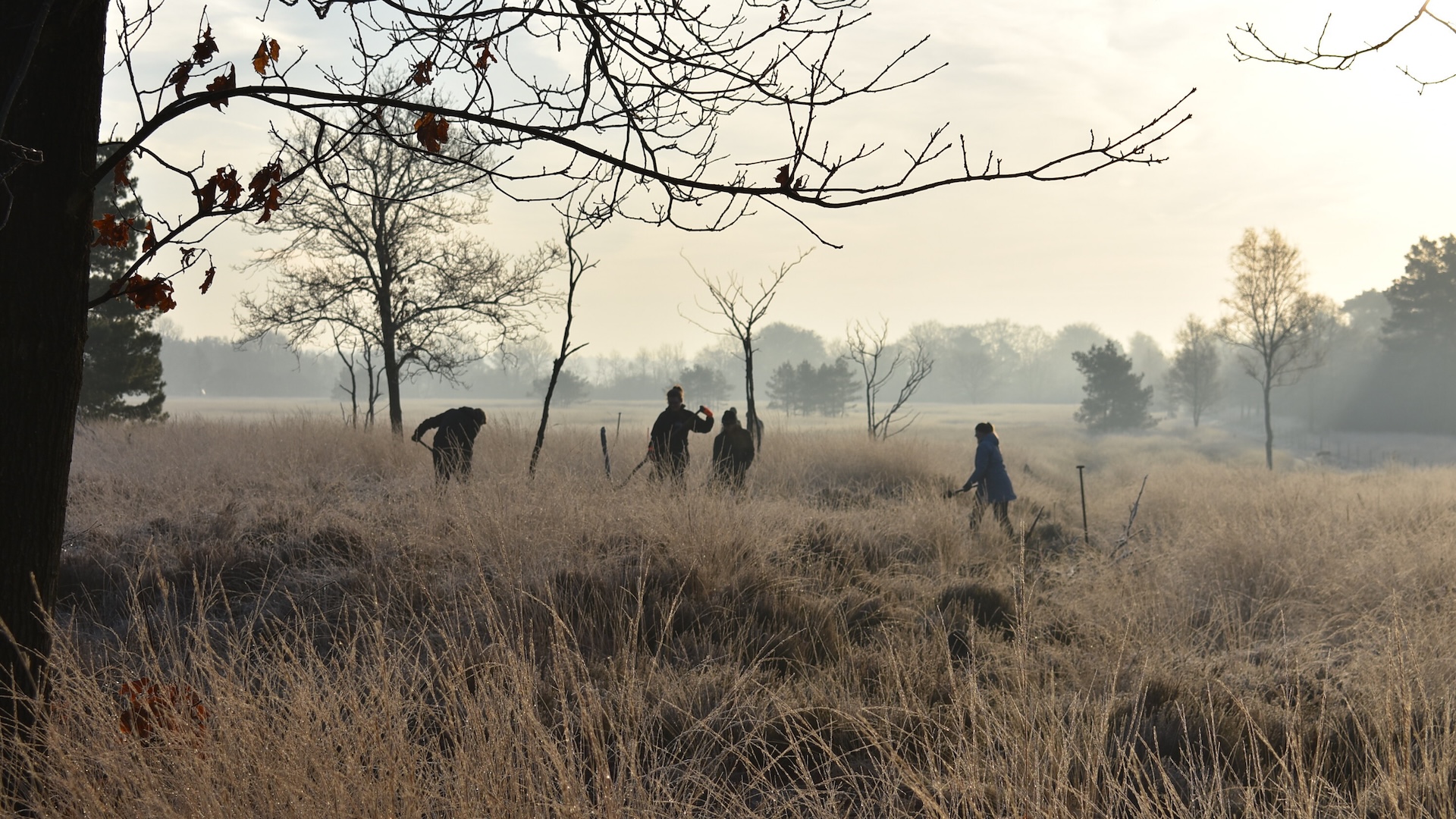'Eight billion bucks or bust': From pirates to 'stupid mistakes' — the wild story of how James Webb Space Telescope almost failed to launch
"Budget overruns, bureaucratic malfeasance, congressional oversight, review-board reckonings, the whole process of rethinking how to test a space telescope from the ground up: Webb had survived them all. One other factor, however, continued to create havoc with the budget and the launch timeline deep into the 2010s — what Menzel called 'stupid mistakes.'"
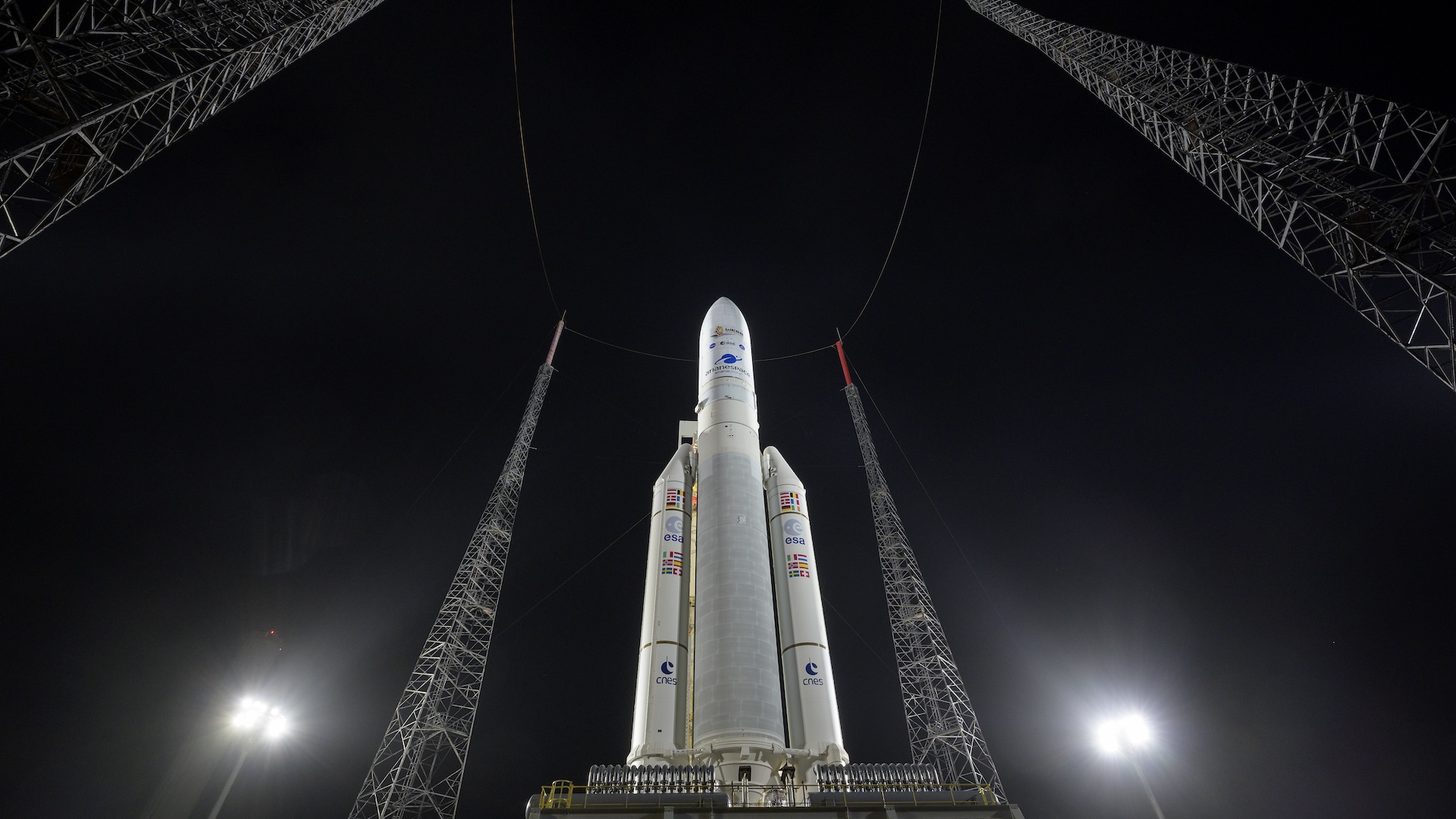
In this excerpt from "Pillars of Creation: How the James Webb Telescope Unlocked the Secrets of the Cosmos" (Little, Brown Book Group, 2024), author Richard Panek looks at the jaw-dropping story behind the launch of the JWST — and how it almost fell at the final hurdle.
In November 2011, Congress delivered its verdict on the fate of Webb. Yes, they would continue to fund it, but they would do so with a caveat, an inviolable budget cap:
Eight billion bucks or bust.
"If they're going to cancel, that's fine," Mike Menzel would tell his crew over the coming years. "Don't worry. Don't even listen."
On a fairly regular basis, Menzel would have to appear before a review board— exercises that his longtime Hubble telescope confrère and Webb collaborator Peter Stockman once likened to Kabuki theater— to explain why the project was taking so long or costing so much. His answer was pretty much what he said when Frank Martin first showed him the plans for the observatory at Lockheed Martin back in the late 1990s:
Relying on analysis— completing a mathematical model for the part of the satellite on one side of the sunshield, then completing another mathematical model for the part on the other side of the sunshield, and then seeing if the models might match — contained a greater capacity for human error than putting the whole kit and caboodle in a several-story-high chamber and shaking it as if there were no tomorrow (which, in the event of stress-test failures, there might not be in terms of the mission's future).
What he needed, Menzel would tell the review boards, was "margin"— shorthand not just for margin of error but for margin of error beyond the margin of error. "The normal rules don't apply here," Menzel liked to say. "This is virgin territory" — a landscape of foreseeable challenges but, more important for his purposes, also unforeseeable threats. "Unknown unknowns," as the Webb crew came to call the problems they couldn't imagine.
Get the world’s most fascinating discoveries delivered straight to your inbox.
"How much margin do you need?" one program manager or another would periodically ask Menzel.
"As much as I can get," he'd answer.
Budget overruns, bureaucratic malfeasance, congressional oversight, review-board reckonings, the whole process of rethinking how to test a space telescope from the ground up: Webb had survived them all. One other factor, however, continued to create havoc with the budget and the launch timeline deep into the 2010s — what Menzel called "stupid mistakes."
One such mistake was miswirings that had fried some of the prototypes' electrical components— for instance, the pressure transducer for the propellant (the transducer being, more or less, the gas gauge). Do we fly without pressure transducers? Menzel's team had to debate the question. The verdict: No. So they had to replace them.
Another stupid mistake: the application of an inappropriate solvent that damaged the observatory's propulsion valves.
And another: seven tears in the sunshield.
Another: a vibration test for the sunshield that ended with dozens of bolts blowing loose and bouncing around the test chamber. The problem turned out to be that the bolts had too few threads. (Team members were fishing bolts out of far crannies of the facility for months afterward.)
Partly because of these accidents, the launch date slipped from October 2018 to June 2019. The U.S. Government Accountability Office, after conducting an investigation into the delay, released an analysis cautioning that even a launch date in June 2019 was likely too optimistic, and indeed a month after the Accountability Office had issued that analysis, NASA announced a further delay, to spring 2020. It also acknowledged that Webb had reached Congress's $8‑billion‑or‑bust budget cap… and would need to exceed it, if the telescope was ever to get off the ground.
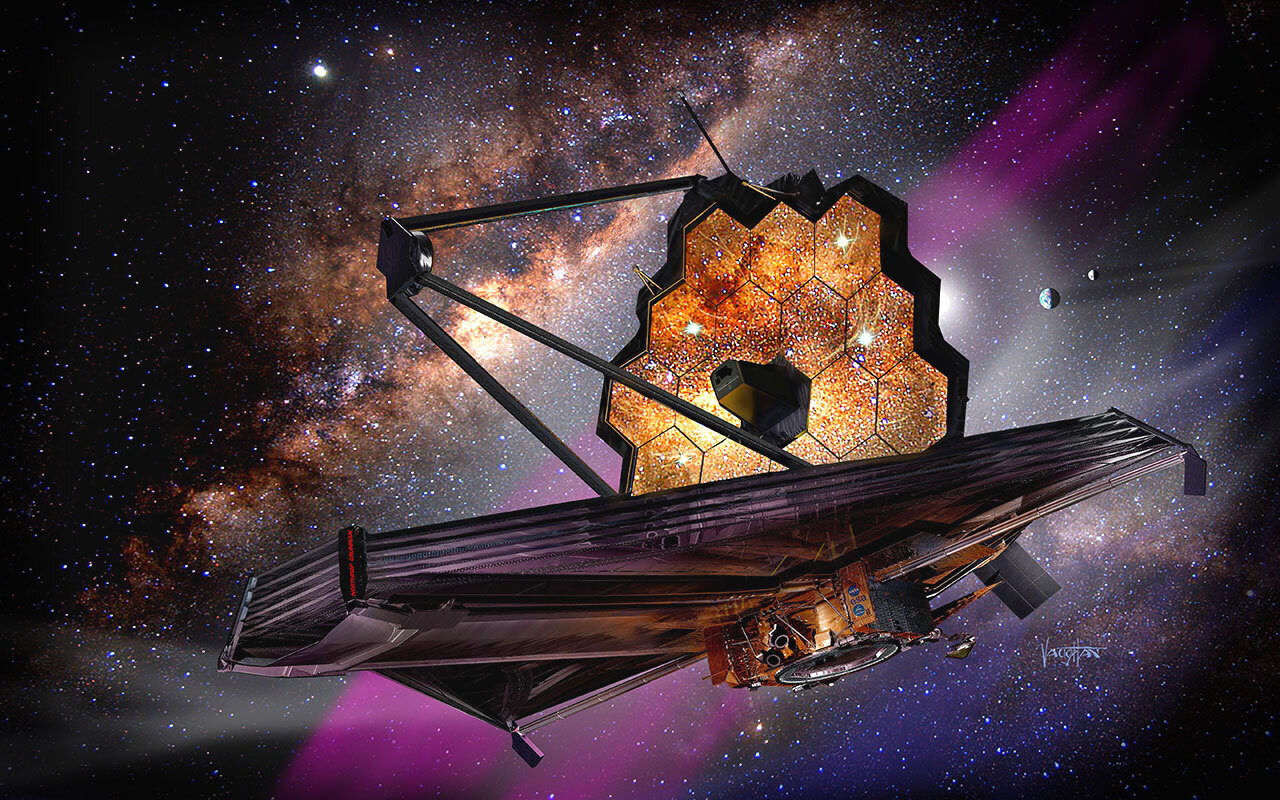
In January 2019 Congress approved a further infusion of $800 million, bringing the total expenditures to $8.8 billion. An accompanying report was brutal. "There is profound disappointment with both NASA and its contractors regarding mismanagement, complete lack of careful oversight, and overall poor basic workmanship on JWST," the report said. "NASA and its commercial partners seem to believe that congressional funding for this project and other development efforts is an entitlement, unaffected by failures to stay on schedule or within budget." And once again Congress threatened the existence of the project: "NASA should strictly adhere to this cap or, under this agreement, JWST will have to find cost savings or cancel the mission."
"Just forget about them," Menzel would tell his team. "I don't care what they say. If you see a problem, just say so, and if we've got to delay, we'll delay." He compared the final preparations for launch to the folding of a parachute: "One little mistake and we're dead meat."
Then came Covid, and with it a work slowdown, prompting the announcement, in July 2020, that the telescope would launch no sooner than October 31, 2021.
For two years the components of Webb had been coming together at NASA's Jet Propulsion Laboratory, just outside Pasadena. Now the time for the telescope to begin its journey from Long Beach to the launchpad at the European spaceport off the northeast coast of South America, near Kourou, French Guiana. The spin of the Earth helps add momentum to a rocket launch, and that spin is greatest at the equator; Kourou is only three hundred or so miles north of it. But the telescope couldn't be shipped as if it were simply one more piece of cargo aboard a freighter. It required a special temperature- and humidity-controlled container. (The freight itself had the opposite requirement: It needed to be as non‑special, as anonymous, as possible, so as to guard against the possibility, however remote, that pirates might seize the ship and hold its $8.8 billion cargo hostage.)
The observatory survived the sixteen-day, 5,800-mile passage down the west coast of Mexico, through the Panama Canal, up the Kourou River to the Port de Pariacabo, and into a processing facility near the launch site in French Guiana without incident — but then it suffered a jolt. A high tension clamp band snapped off, shaking the observatory. An inspection revealed no damage, but the late-December launch slipped another few days.
Even the name of the telescope, in those final weeks, became a distraction, albeit of the public-relations kind. The tenure of the historical personage of James Webb as the second in command at the Department of State in the late 1940s and early 1950s and then as the head of NASA in the 1960s coincided with what historians have come to call the "lavender scare" — a search for and purge of LGBTQ employees at federal institutions (ostensibly because they might be subject to blackmail and therefore pose a security risk). Investigations had turned up scant specific evidence of James Webb's involvement, but the association between bureaucracy and bigotry was close enough that some astronomers decided they would sacrifice linguistic convenience and thereafter refer to the telescope not as "Webb," a one-syllable nibble, but only as "JWST," a six-syllable Dagwood sandwich.
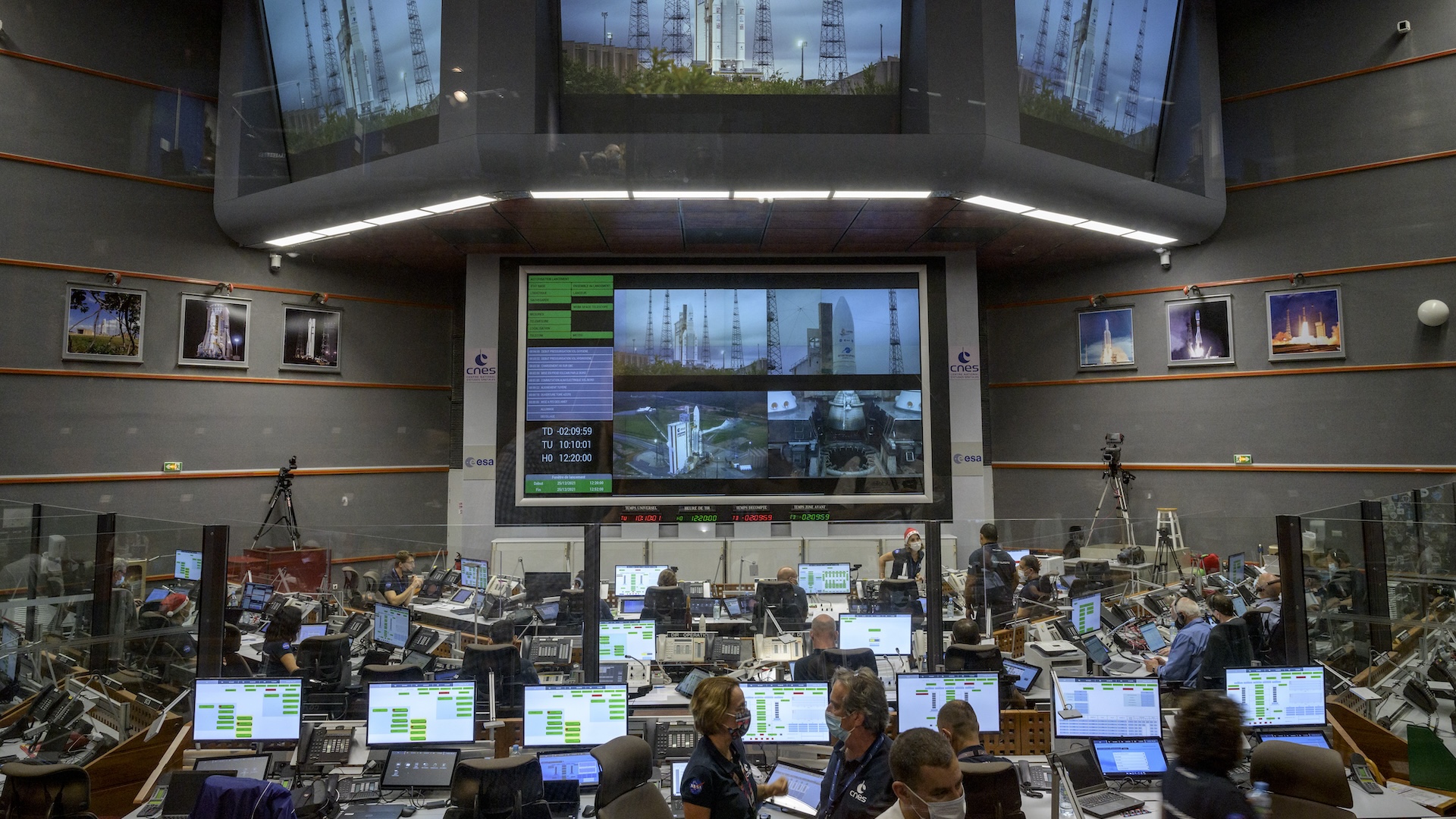
Despite the mission's history of nonlinearity over the previous decades, it couldn't have reached this final stage without a lot going right. You could miss that perspective if you were in the eye of the maelstrom or even closely observing it. Even so, no one involved in the project could know how much had gone right until the Ariane 5 rocket bearing Webb had not just lifted off but survived "six months of terror" (as the media liked to say). During those months the observatory would confront 344 "single points of failure," in NASA nomenclature— executions of technology that would reveal whether the miracles of invention and ingenuity that were unique to this mission actually worked on‑site (that is to say, in space), the failure of any one of which would scuttle the entire project.
Those first six months, though, weren't what the scientists at the Institute and NASA were most concerned about. It was, instead, the first thirty days. Or maybe even the first two weeks, the period during which Webb would execute some of its most intricate exercises.
With a forecast of high winds for December 24, 2021, the launch slipped one last time. On the morning of December 25, in the second-story command center at the Institute, in the auditorium downstairs on the main floor, at viewing parties at aerospace facilities around the world, and in front of computer screens on every continent, humans gathered to watch and wait.
At 7:20 a.m. Baltimore time— Baltimore time thenceforth being the official timestamp for the receipt of Webb's nonterrestrial communications— the countdown to the launch reached that relic from the 1960s Space Race: the backward count to blastoff.
Dix…
Neuf…
Huit…
Sept…
Six…
Cinq…
Quatre…
Trois…
Deux…
Unité…
…
Décollage!
Excerpted from PILLARS OF CREATION by Richard Panek. Copyright © 2024 by Richard Panek. Reprinted with permission of Little, Brown and Company. All rights reserved.
Pillars of Creation: How the James Webb Telescope Unlocked the Secrets of the Cosmos — $25.55 on Amazon
The James Webb Space Telescope is transforming the universe right before our eyes—and here, for the first time, is the inside account of how the mission originated, how it performs its miracles of science, and what its revolutionary images are revealing.

Richard Panek is the author of numerous books including "The 4% Universe: Dark Matter, Dark Energy, and the Race to Discover the Rest of Reality," which won the American Institute of Physics communication award and was longlisted for the Royal Society Prize for Science Books. The recipient of fellowships from the John Simon Guggenheim Foundation (in Science Writing) and the New York Foundation for the Arts as well as an Antarctic Artists and Writers grant from the National Science Foundation, he is also the co-author with "Temple Grandin of The Autistic Brain: Thinking Across the Spectrum," a New York Times bestseller. His own books have been translated into sixteen languages, and his writing about science and culture has appeared in publications including the New York Times, the Washington Post, Scientific American, Discover, Smithsonian, Natural History, Esquire, and Outside. He lives in New York City.
